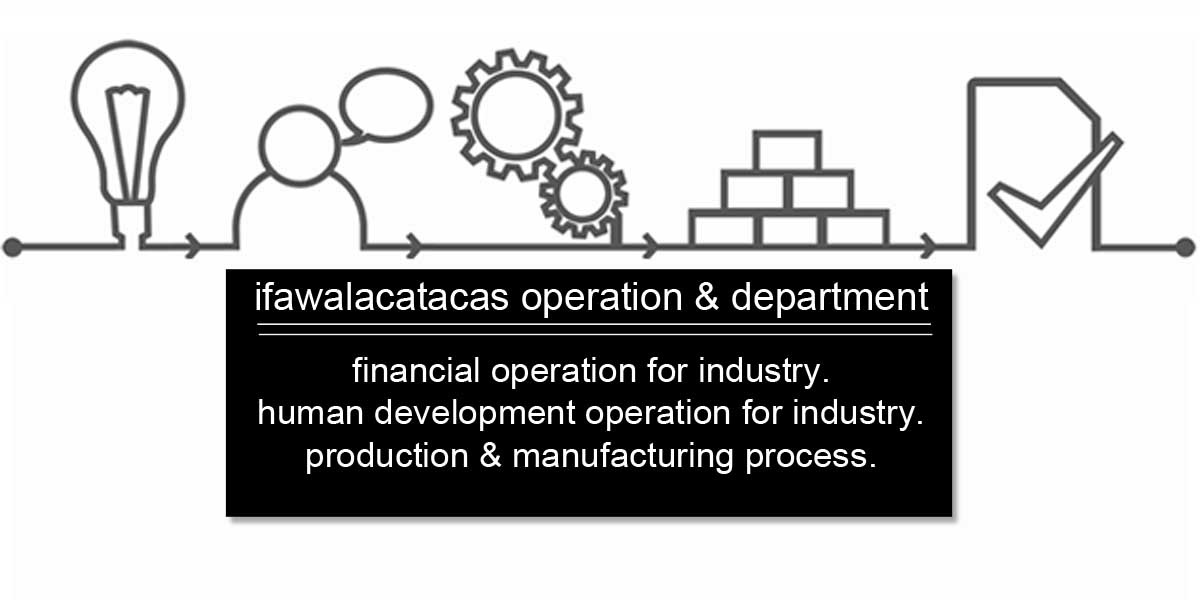ifawalacatacas.com have a operational & technical management
division where focus on business management traditionaly in manufacturing industries where
operation research development take a analytical roles. It prefer total quality facilities planning &
E-business strategies.
ifawalacatacas.com have a key role in financial accounting & market research
where we develop & search a better market business growth for industry & human.
ABOUT
Operational strategies refers to the methods companies use to reach their objectives. By developing operational strategies, a company can examine and implement effective and efficient systems for using resources, personnel and the work process. Service-oriented companies also use basic operational strategies to link long- and short-term corporate decisions and create an effective management team.
Corporate Strategy
Corporate strategies involve seeing a company as a system of interconnected parts. Just as the muscles of the heart depend on brain functions in a human body, each department in a company depends on the others to stay healthy and achieve desired outcomes. The additional core strategies that a company uses should support the corporate strategy and use cross-functional interactions.
Customer-driven Strategies
Operational strategies should include customer-driven approaches to meet the needs and desires of a target market. To do so, a company must develop strategies that evaluate and adapt to changing environments, continuously enhance core competencies and develop new strengths on an ongoing basis. When evaluating environments, a company should monitor market trends to take advantage of new opportunities and avoid possible threats.
Developing Core Competencies
Core competencies are the strengths and resources within a company. While core competencies can vary by industry and business, they can include having well-trained staff, optimal business locations and marketing and financial expertise. By identifying core competencies, a company can develop processes such as customer satisfaction, product development and building professional relationships with stakeholders.
Competitive Priorities
The development of competitive priorities comes from the creation of a corporate strategy, market analysis, defining core processes and conducting a needs analysis. To create competitive priorities, an organization evaluates operational costs, the quality of a product or service, the time it takes to develop and deliver a good or service and the flexibility of a good or service with regard to variety, volume and customization. Competitive priorities should include being able to provide a quality product or service at a fair cost that consistently meets the needs of a customer.
Product and Service Development
Strategies behind the development of products and services should consider design, innovation and added values. When developing new customer products, a company can decide to be a leader in introducing a new product or service, wait for the introduction of innovations on the market to improve upon them or wait to see if a company's innovation is successful before moving forward. When developing a service, companies should consider packaging it with immediately observable and psychological benefits and support services. When developing a good or service, a company should consider the wants of its customers, how its stands against the competition and how its technical measures relate to its customers' needs.
Maintenance
Maintenance, repair and operations(MRO) or maintenance, repair, and overhaul involves fixing any sort of mechanical, plumbingor electrical device should it become out of order or broken (known as repair, unscheduled, or casualty maintenance). It also includes performing routine actions which keep the device in working order (known as scheduled maintenance) or prevent trouble from arising (preventive maintenance). MRO may be defined as, "All actions which have the objective of retaining or restoring an item in or to a state in which it can perform its required function. The actions include the combination of all technical and corresponding administrative, managerial, and supervision actions."
MRO operations can be categorised by whether the product remains the property of the customer, i.e. a service is being offered, or whether the product is bought by the reprocessing organisation and sold to any customer wishing to make the purchase. In the former case it may be a backshop operation within a larger organization or smaller operation.
The former of these represents a closed loop supply chain and usually has the scope of maintenance, repair or overhaul of the product. The latter of the categorisations is an open loop supply chain and is typified by refurbishment and remanufacture. The main characteristic of the closed loop system is that the demand for a product is matched with the supply of a used product. Neglecting asset write-offs and exceptional activities the total population of the product between the customer and the service provider remains constant.
Generally speaking, there are four types of maintenance in use:
Preventive maintenance where equipment is maintained before break down occurs.
Operational maintenance where equipment is maintained in using.
Corrective maintenance where equipment is maintained after break down. This maintenance is often most expensive because worn equipment can damage other parts and cause multiple damages.
Adaptive maintenance where equipment is maintained by letting it adapt to new environment.

